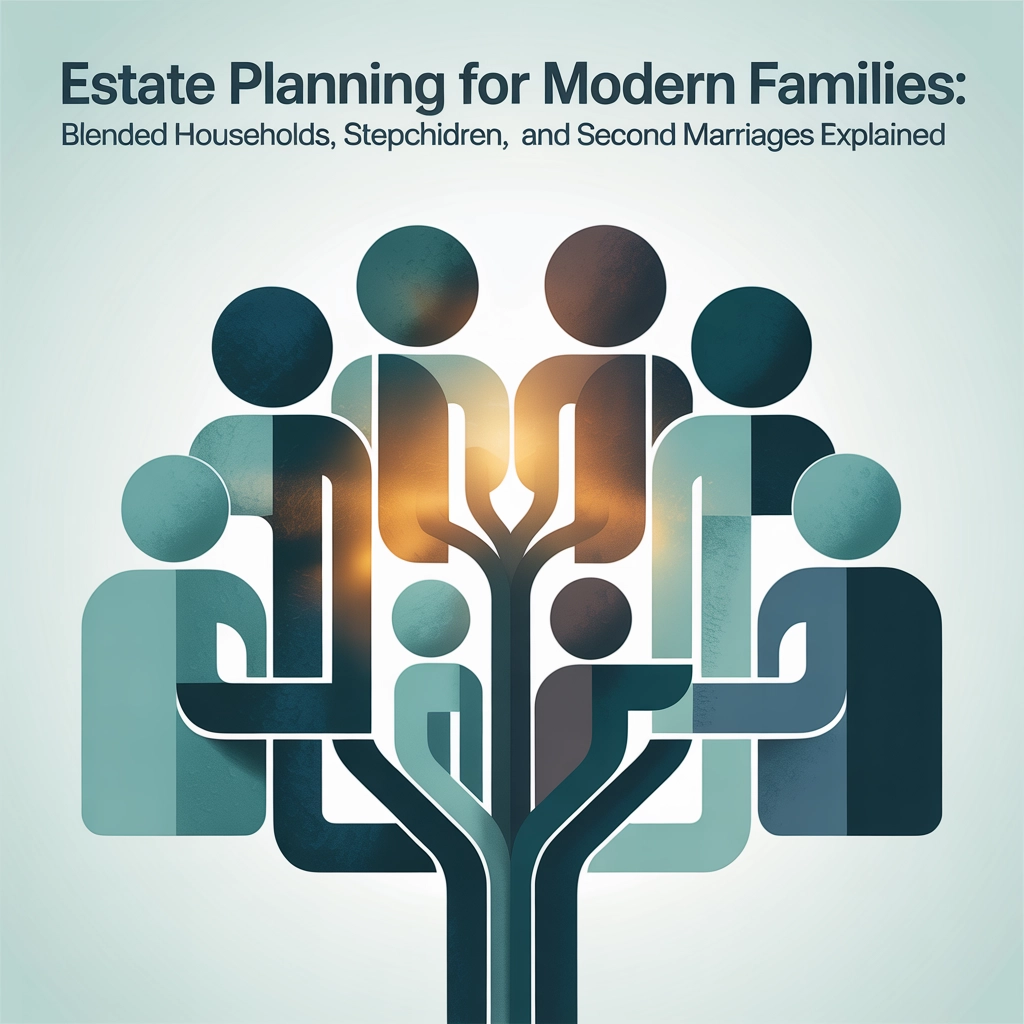Estate Planning for Modern Families: Blended Households, Stepchildren, and Second Marriages Explained

Today, family doesn’t always look like it did fifty years ago. Blended families—where one or both spouses bring kids from prior relationships into a new marriage—now make up 21% of opposite-sex couples in the US. Over 1,300 new stepfamilies start every single day, and the majority of remarriages involve at least one stepchild. In this landscape, estate planning isn’t just a good idea—it’s essential.
But here’s the catch: traditional estate planning methods rarely fit the realities of modern family life. Let’s break down exactly why, and how you can protect everyone you love—stepchildren, biological kids, and your spouse—without leaving relationships (or inheritances) up in the air.
Why Estate Planning Gets Tricky for Blended Families
Blended families face some unique—and sometimes pretty emotional—challenges when it comes to estate planning. Here’s what’s at stake:
Balancing Spouse and Children’s Needs
Suppose you’ve remarried and both of you bring children to the family. If you leave everything to your spouse in a simple will, there’s a risk that your biological children (from your first marriage) might be left out completely if your spouse—intentionally or unintentionally—doesn’t leave them an inheritance. The opposite can happen, too: if everything goes to your own children, your spouse could be left with almost nothing.

Stepchildren Can Be Vulnerable
Under Texas and Arkansas law (and in most states), stepchildren won’t inherit unless you explicitly include them in your estate plans. That means children whom you’ve raised and loved together may not have any legal rights to your estate—unless you take control of the paperwork.
The Risk of Unintended Consequences
You might think, “My spouse knows my wishes—they’ll do the right thing.” But life changes. After your passing, your spouse could remarry or simply revisit their own will. In doing so, your wishes for your biological children (or stepchildren) might get lost in the shuffle. Sadly, this is more common than you’d think—66% of remarriages with kids end in divorce, and old estate plans often get left behind or unintentionally reverted.
Common Pitfalls—and How to Avoid Them
Let’s highlight some mistakes we see all too often:
- Forgetting to update beneficiary designations after a divorce, remarriage, or having more children. These designations override your will or trust—so if your ex-spouse is still listed, that’s who gets the account.
- Assuming state law “will do the right thing.” Laws don’t automatically balance everyone’s interests, and stepchildren have no built-in protections.
For reassurance, check out our deeper dive into common estate planning myths.
Your Estate Planning Toolkit for Modern Families
Ready to make sure everyone is protected? Here are the tools you’ll want in your back pocket:
1. Trusts—Your Custom-Tailored Solution
Trusts are incredibly useful for blended families. With a living trust, you determine exactly who gets what, and when. It allows you to:
- Provide for your spouse while ensuring your remaining assets go to your biological or chosen children after your spouse’s passing
- Include stepchildren as beneficiaries, if you choose
- Avoid the public and sometimes costly process of probate
A special kind of trust, the QTIP (Qualified Terminable Interest Property) trust, is particularly popular. It lets you grant your spouse income and use of the assets during their life, with the remainder passing to your children after your spouse dies. That way, your spouse is cared for, and your own kids are protected no matter what happens in the future.
Learn more about how trusts work on our Trust & Probate Blog.
2. Update Your Beneficiary Designations
Don’t let your hard work go to an unintended recipient! Accounts like IRAs, 401(k)s, and life insurance pay directly to the beneficiaries you name—no matter what your will or trust says. Review your designations after every major family change: marriage, divorce, birth, or adoption.
3. Use Prenuptial and Postnuptial Agreements
These legal contracts aren’t just for the ultra-wealthy. They’re practical tools for all remarried couples—especially when kids are in the mix. These agreements can specify how assets are handled if something happens or if the marriage ends. Prenuptial agreements also let both partners feel protected, which actually helps blended families build trust.

4. Durable Power of Attorney and Healthcare Directives
Blended families sometimes face tough medical decisions. Naming who’s in charge—whether it’s a spouse, biological child, or another trusted person—prevents confusion and conflict if you can’t speak for yourself.
5. Letter of Instruction
Not a legal document, but still valuable: a letter to your loved ones explaining your wishes. This can clarify your thinking and reduce the potential for hurt feelings.
Strategic Steps to Take
Define Your Goals—Together
Sit down with your spouse and talk honestly. What are your family priorities? Whom do you want to provide for first and foremost? Consider everyone—biological children, stepchildren, elderly parents, even grandchildren. Deciding your intentions before seeing an attorney can speed up the process and help avoid arguments later.
Communicate With Loved Ones
Clear communication is your secret weapon. Blended families thrive on transparency. Tell your children (and stepchildren) what you’re planning and why. While not every conversation will be easy, surprises are generally much worse for family harmony after someone’s gone.
Curious about how family talks can prevent problems? We covered this in our Father’s Day Legacy Planning post.
Keep Your Plan Updated
Major life events mean it’s time to revisit your plan. Marriage, divorce, adoption, and the birth of grandchildren can all create new needs. Make a habit of checking your estate plan and beneficiary forms every couple of years.

Work With Professionals Who Get It
Blended family estate planning isn’t a DIY project. Find an attorney who focuses on complex family structures—they’ll ask questions you may not have considered and can design a plan with your priorities in mind. At Baranski Law, P.C., we’re here to guide Texas and Arkansas families through every detail.
Real-Life Scenarios
Case 1: Providing for Everyone
Mary and Tom both have children from previous marriages. By setting up a joint revocable trust, they allow the surviving spouse to access assets, but when both are gone, the trust assets split between Mary’s and Tom’s respective kids. No one gets left out—or caught off guard.
Case 2: Honoring Relationship Dynamics
Carol’s stepdaughter has been part of her life for 20 years, but they’re not legally related. Carol decides to include her stepdaughter in her trust. Without this legal move, her assets would pass only to her biological son, leaving out a close family member.
Every blended family’s story is different. The legal tools should fit your unique dynamic—not the other way around.
Protecting Your Family’s Legacy—Today and Tomorrow
No two families are exactly alike, and that’s doubly true for blended and stepfamilies. The key is to recognize the potential pitfalls, build flexibility into your plan, and keep the lines of communication open.
Blended family estate planning can be daunting, but you don’t have to figure it out alone. If you’d like help putting a plan in place—or want to make sure your current plan fits your modern family—reach out to us at Baranski Law, P.C.. Our mission is to help you protect everyone you love, on your terms.
Need more info? Dive into our Family Protection topics and Estate Planning Lessons or check out stories of what happens when plans aren’t up-to-date in our Celebrity Estate Disasters section.